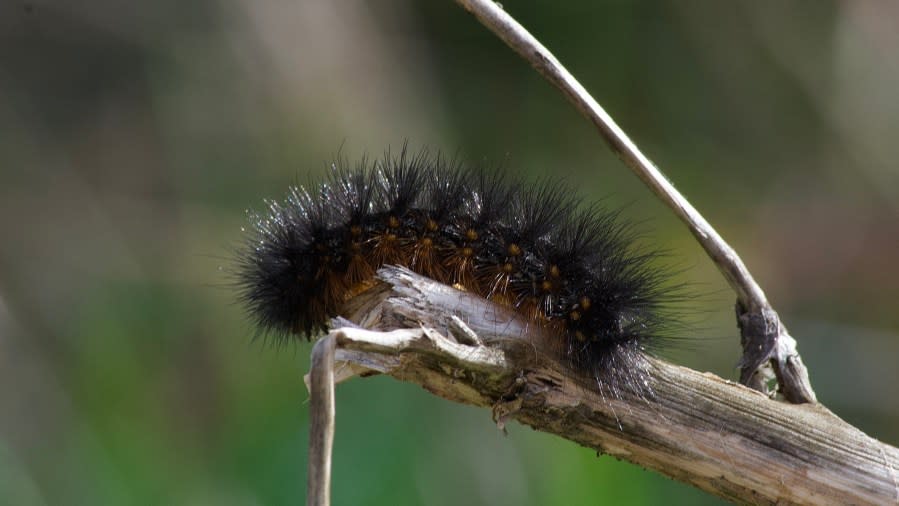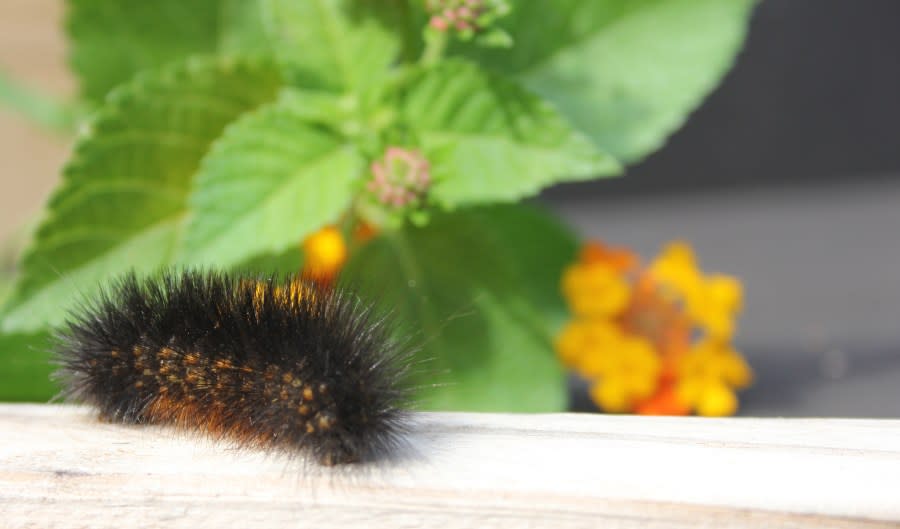Black caterpillars in Texas: Are they poisonous?

(NEXSTAR) — With summer approaching, you may start seeing those fuzzy black caterpillars in trees and bushes again. But is there any reason to worry when you do encounter them?
As explained by Wizzie Brown, integrated pest management specialist at Texas A&M AgriLife Extension Services, fuzzy black caterpillars — also known as woollybear caterpillars — typically hunker down during winter before emerging in the spring and summer.
Words you can’t use when opening a business in Texas
But it turns out that despite how instinctually you might be repelled by these furry-looking insects, they can’t really harm you.
“Many people see the hairs on this caterpillar and automatically think, ‘Don’t touch that — I’m going to be stung.’ Fortunately, these are not stinging caterpillars, so you can handle them, and they won’t hurt you,” said Brown.
There are many types of woollybear caterpillars, according to TAMU. Here in Texas, you’re most likely to see saltmarsh caterpillars (seen below) and the garden tiger moth caterpillar. The university explains that saltmarsh caterpillars typically are black-brown to yellowish, while garden tiger moth caterpillars have black tops and brown bottoms.

And while these fuzzy caterpillars won’t hurt you, it’s also important to remember that you should never pick up any insects or creatures you aren’t familiar with. It’s recommended that you put on gloves for handling any insects you might want to gently observe or move.
Finally, here’s a fun little anecdote about these caterpillars.
Did you know there’s an old folk story that woolly bear caterpillars can predict whether or not winters will be harsh? According to the legend, if a season’s woolly bears have larger red-orange bands on them, an incoming winter is said to be harsh. If the band is smaller, it will be mild.
But is it true?
PHOTOS: ‘Rare’ solar storm passes over Central Texas
No surprises here, Brown says the “wives’ tale doesn’t hold water.” Brown explains the caterpillars’ coloring isn’t an accurate gauge for the weather for several reasons — including the fact that there are about eight different woollybear caterpillars and they’re all various colors.
“The coloration can also depend upon what stage the caterpillar is in. If it’s in one of the smaller instars, the coloration or the size of the band will be slightly different than if you have the later stages,” said Brown. “It can also depend on what they’ve been eating and how much food they’ve been getting. There’s a lot of stuff that goes into it.”
For the latest news, weather, sports, and streaming video, head to KXAN Austin.

